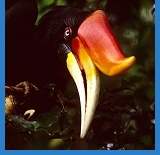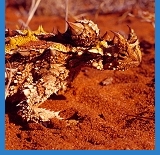




Related bibliographies:
Reptiles
 Worm Lizards Worm Lizards
 Trogonophidae Trogonophidae
Middle East






































































































































































































































































































































| |

Bibliography of the genus
Diplometopon (Arabian Speckled Worm Lizard)

(Reptilia: Amphisbaenia: Trogonophidae)
Note:
In order to limit redundancy, relevant literature indexed in the related bibliographies in the left column may not have been included in this page. For a comprehensive search of literature, these bibliographies should therefore also be consulted.
Diplometopon zarudnyi
 |
Al-Johany, A.M. 1999. The activity and thermal biology of the fossorial reptile, Diplometopon zarudnyi (Amphisbaenia: Trogonophiidae) in central Saudi Arabia. Asiatic Herpetological Research 8: 1-6.
Al-Sadoon, M.K.; Kandeal, S.A.; Rodiny, H.A. 2014. Reproductive characteristics of the worm lizard, Diplometopon zarudnyi, in relation to months of the year in Riyadh region of Saudi Arabia. Comptes Rendus Biologies 337(4): 229-234.
Al-Shammari, A.M. 2012. Additional records of lizards in Ha'il Province, Saudi Arabia. Russian Journal of Herpetology 19(4): 287-291.
Anderson, S.C. 1979. Synopsis of the turtles, crocodiles, and amphisbaenians of Iran. Proceedings of the California Academy of Sciences 41(22): 501-528.
Behbehani, S.J.Y.; Els, J.; Soorae, P.; Al Johany, A.M.H.; Papenfuss, T.J. 2012. Diplometopon zarudnyi. The IUCN Red List of Threatened Species 2012: e.T164643A1063445. http://dx.doi.org/10.2305/IUCN.UK.2012.RLTS.T164643A1063445.en.
Branch, W.R. 1980. The scientific results of the Oman flora and fauna survey, 1977 (Dhofar). Chromosome morphology of some reptiles from Oman and adjacent territories. Journal of Oman Studies Special Report 2: 333-345.
Cloudsley-Thompson, J.L. 1979. Water loss and locomotory activity in Agama persica and Diplometopon zarudnyi from Kuwait. Journal of Arid Environments 2(3): 273-277.
El-Assy, Y.S.; Al-Nassar, N.A. 1976. Morphological study of the cranial osteology of the amphisbaenian Diplometopon zarudnyi. Journal Univ. Kuwait (Sci.) 3: 113-142.
Gans, C.; Wever, E.G. 1974. Temperature effects on hearing in two species of amphisbaenia. Nature (London) 250(5461): 79-80.
Gans, C.; Wever, E.G. 1975. The amphisbaenian ear: Blanus cinereus and Diplometopon zarudnyi. Proceedings of the National Academy of Sciences of the United States of America 72(4): 1487-1490.
Haas, G. 1957. Some amphibians and reptiles from Arabia. Proceedings of the California Academy of Sciences (Ser. 4) 29(4): 47-86.
Hellyer, P. 1994. Amphisbaenian (Diplometopon zarudnyi). Tribulus 4(1): 22.
Rudayni, H.A.; Al-Sadoon, M.K.; Paray, B.A. 2017. Morphological characteristics of worm lizard, Diplometopon zarudnyi (Squamata: Trogonophidae), in the central region of Saudi Arabia. Saudi Journal of Biological Sciences 24(4): 966-971
|
| |










































































































































































|

